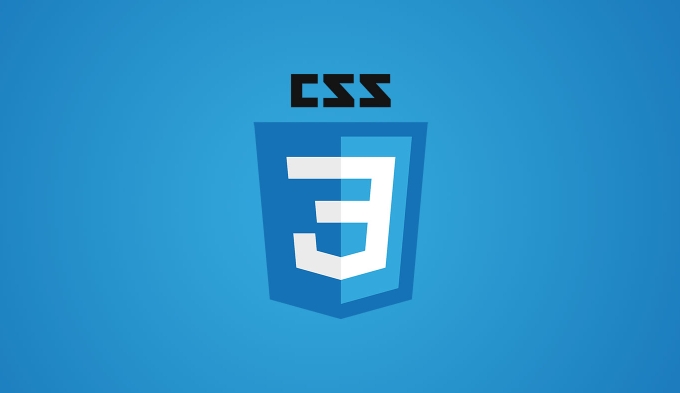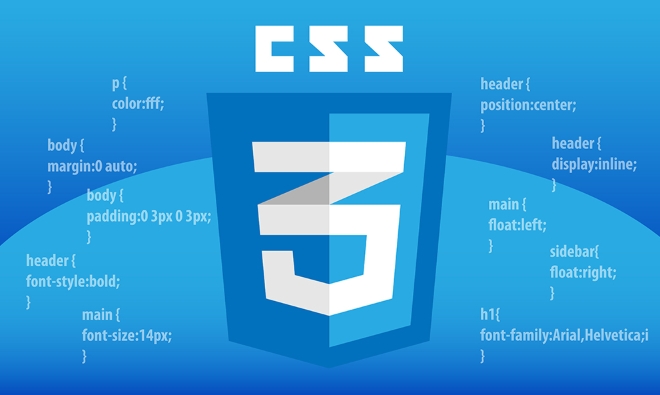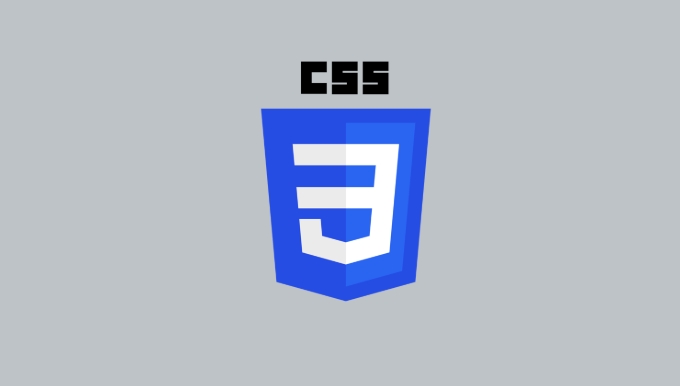The core difference between rem and em is that the calculation benchmarks are different. Rem is always based on the font size of the root element (usually ), suitable for global consistency scenarios such as basic font size and layout spacing; while em is based on the font size of the recent parent element, suitable for internal use of components that require local scale scaling, such as button icons and form tags; using rem can avoid the size multiplication problem during nesting, and supports overall scaling by adjusting the root font size, while using em requires attention to the unexpected effects that may be caused by hierarchical overlay.

When building responsive and accessible websites, choosing the right unit for sizing elements in CSS matters. Two units that often come up in discussions are em and rem . While they might seem interchangeable at first glance, they behave differently and serve different purposes depending on your layout needs.

What's the basic difference?
The main difference between em and rem lies in what they're based on.
-
emis relative to the font size of its direct or nearest parent element . -
remstands for "root em" and is always relative to the font size of the root element , which is usually theelement.
This means that with em , sizes can compound if you're not careful—especially in deeply nested elements. With rem , everything stays consistent because it's tied directly to the root font size.

For example:
html {
font-size: 16px;
}
div {
font-size: 1.5em; /* 24px */
}
span {
font-size: 1.5em; /* 36px (based on parent div's 24px) */
} In this case, the span ends up much bigger than expected because each level inherits and scales the size.

When to use em
Use em when you want an element's size to scale relative to its parent —this is especially useful for UI components like buttons or cards where internal spacing should stay proportional even if the component's overall size changes.
Some practical uses:
- Icons inside buttons
- Padding/margin within a module or component
- Font sizes for labels inside form elements
Just keep in mind that nesting multiple em values can lead to unexpected results unless you carefully track inherited sizes.
When to use rem
Use rem when you want more predictable and consistent sizing across your site. It's ideal for things like:
- Base font sizes for body text
- Spacing (margins, padding) between major layout elements
- Widths and heights of larger containers
Because rem is always based on the root font size, it avoids compounding issues and makes global design changes easier. For instance, if you change the root font size, all rem -based measures scale accordingly—great for accessibility features like allowing users to adjust default font sizes.
A common practice is setting a base font size like this:
html {
font-size: 16px;
} Then using rem for nearly everything else.
A few small but important details
One thing many developers miss early on is how browser defaults affect rem . Most browsers set the default <html> font size to 16px, so 1rem equals 16px by default—but this can vary if users have changed their settings.
Also, using media queries with rem can help maintain visual consistency. For example:
@media (min-width: 40rem) {
/* Adjust styles for larger screens */
}This way, breakpoints scale along with the root font size, keeping proportions intact.
Another tip: If you're working on a large project, consider using a CSS preprocessor or tool that helps convert pixel values into rem automatically—it reduces manual calculation errors.
Basically that's it. Choosing between em and rem comes down to whether you need local scaling ( em ) or global consistency ( rem ). Both are powerful, just suited for different situations.
The above is the detailed content of Compare `em` and `rem` units in CSS. For more information, please follow other related articles on the PHP Chinese website!

Hot AI Tools

Undress AI Tool
Undress images for free

Undresser.AI Undress
AI-powered app for creating realistic nude photos

AI Clothes Remover
Online AI tool for removing clothes from photos.

Clothoff.io
AI clothes remover

Video Face Swap
Swap faces in any video effortlessly with our completely free AI face swap tool!

Hot Article

Hot Tools

Notepad++7.3.1
Easy-to-use and free code editor

SublimeText3 Chinese version
Chinese version, very easy to use

Zend Studio 13.0.1
Powerful PHP integrated development environment

Dreamweaver CS6
Visual web development tools

SublimeText3 Mac version
God-level code editing software (SublimeText3)
 How to use PHP to build social sharing functions PHP sharing interface integration practice
Jul 25, 2025 pm 08:51 PM
How to use PHP to build social sharing functions PHP sharing interface integration practice
Jul 25, 2025 pm 08:51 PM
The core method of building social sharing functions in PHP is to dynamically generate sharing links that meet the requirements of each platform. 1. First get the current page or specified URL and article information; 2. Use urlencode to encode the parameters; 3. Splice and generate sharing links according to the protocols of each platform; 4. Display links on the front end for users to click and share; 5. Dynamically generate OG tags on the page to optimize sharing content display; 6. Be sure to escape user input to prevent XSS attacks. This method does not require complex authentication, has low maintenance costs, and is suitable for most content sharing needs.
 PHP creates a blog comment system to monetize PHP comment review and anti-brush strategy
Jul 25, 2025 pm 08:27 PM
PHP creates a blog comment system to monetize PHP comment review and anti-brush strategy
Jul 25, 2025 pm 08:27 PM
1. Maximizing the commercial value of the comment system requires combining native advertising precise delivery, user paid value-added services (such as uploading pictures, top-up comments), influence incentive mechanism based on comment quality, and compliance anonymous data insight monetization; 2. The audit strategy should adopt a combination of pre-audit dynamic keyword filtering and user reporting mechanisms, supplemented by comment quality rating to achieve content hierarchical exposure; 3. Anti-brushing requires the construction of multi-layer defense: reCAPTCHAv3 sensorless verification, Honeypot honeypot field recognition robot, IP and timestamp frequency limit prevents watering, and content pattern recognition marks suspicious comments, and continuously iterate to deal with attacks.
 What are common CSS browser inconsistencies?
Jul 26, 2025 am 07:04 AM
What are common CSS browser inconsistencies?
Jul 26, 2025 am 07:04 AM
Different browsers have differences in CSS parsing, resulting in inconsistent display effects, mainly including the default style difference, box model calculation method, Flexbox and Grid layout support level, and inconsistent behavior of certain CSS attributes. 1. The default style processing is inconsistent. The solution is to use CSSReset or Normalize.css to unify the initial style; 2. The box model calculation method of the old version of IE is different. It is recommended to use box-sizing:border-box in a unified manner; 3. Flexbox and Grid perform differently in edge cases or in old versions. More tests and use Autoprefixer; 4. Some CSS attribute behaviors are inconsistent. CanIuse must be consulted and downgraded.
 How to build a PHP Nginx environment with MacOS to configure the combination of Nginx and PHP services
Jul 25, 2025 pm 08:24 PM
How to build a PHP Nginx environment with MacOS to configure the combination of Nginx and PHP services
Jul 25, 2025 pm 08:24 PM
The core role of Homebrew in the construction of Mac environment is to simplify software installation and management. 1. Homebrew automatically handles dependencies and encapsulates complex compilation and installation processes into simple commands; 2. Provides a unified software package ecosystem to ensure the standardization of software installation location and configuration; 3. Integrates service management functions, and can easily start and stop services through brewservices; 4. Convenient software upgrade and maintenance, and improves system security and functionality.
 Describe the `vertical-align` property and its typical use cases
Jul 26, 2025 am 07:35 AM
Describe the `vertical-align` property and its typical use cases
Jul 26, 2025 am 07:35 AM
Thevertical-alignpropertyinCSSalignsinlineortable-cellelementsvertically.1.Itadjustselementslikeimagesorforminputswithintextlinesusingvalueslikebaseline,middle,super,andsub.2.Intablecells,itcontrolscontentalignmentwithtop,middle,orbottomvalues,oftenu
 What is the accent-color property?
Jul 26, 2025 am 09:25 AM
What is the accent-color property?
Jul 26, 2025 am 09:25 AM
accent-color is an attribute used in CSS to customize the highlight colors of form elements such as checkboxes, radio buttons and sliders; 1. It directly changes the default color of the selected state of the form control, such as changing the blue check mark of the checkbox to red; 2. Supported elements include input boxes of type="checkbox", type="radio" and type="range"; 3. Using accent-color can avoid complex custom styles and extra DOM structures, and maintain native accessibility; 4. It is generally supported by modern browsers, and old browsers need to be downgraded; 5. Set accent-col
 How to compile SCSS to CSS?
Jul 27, 2025 am 01:58 AM
How to compile SCSS to CSS?
Jul 27, 2025 am 01:58 AM
InstallDartSassvianpmafterinstallingNode.jsusingnpminstall-gsass.2.CompileSCSStoCSSusingthecommandsassinput.scssoutput.css.3.Usesass--watchinput.scssoutput.csstoauto-compileonsave.4.Watchentirefolderswithsass--watchscss:css.5.Usepartialswith_prefixfo
 How to change text color in CSS?
Jul 27, 2025 am 04:25 AM
How to change text color in CSS?
Jul 27, 2025 am 04:25 AM
To change the text color in CSS, you need to use the color attribute; 1. Use the color attribute to set the text foreground color, supporting color names (such as red), hexadecimal codes (such as #ff0000), RGB values (such as rgb(255,0,0)), HSL values (such as hsl(0,100%,50%)), and RGBA or HSLA with transparency (such as rgba(255,0,0,0.5)); 2. You can apply colors to any element containing text, such as h1 to h6 titles, paragraph p, link a (note the color settings of different states of a:link, a:visited, a:hover, a:active), buttons, div, span, etc.; 3. Most






